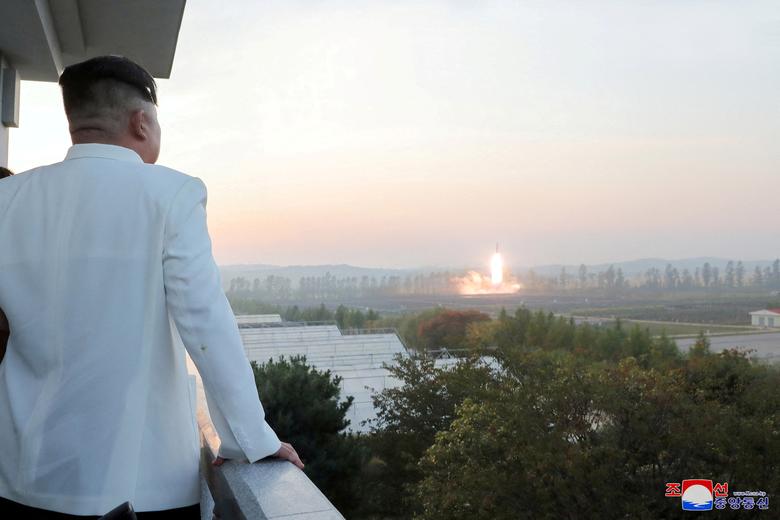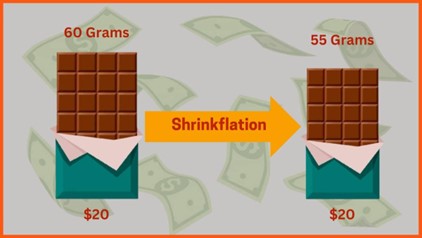 |
| ▲ The scene where Kim Jong-un watches the missile launch (Source: Chosun Central News Agency) |
On Nov. 2, North Korea launched a series of missiles into the East and West Seas. Due to North Korea's provocation, an air raid warning was issued in Ulleung- gun, and the South Korean government mobilized F- 15K and F- 16K planes to fire precision strikes at the, "distance corresponding to the missile bomb area provoked by North Korea." What's unusual about this provocation is that North Korea conducted artillery fire on a maritime buffer zone, based on the September 19 military agreement, and that it sank missiles south of the Northern Limit Line (NLL) for the first time since the ceasefire of the Korean war.
North Korea's provocations against South Korea have a long history. North Korea's well- known provocations are the, "Kim Shin- jo incident," and the, "KAL bombing incident." These two incidents indicate that North Korea's provocations against South Korea were mainly aerial attacks or infiltration of spies. However, since the collapse of the Eastern Block in the 1990s, North Korea's provocations against South Korea have increased in a number of nuclear tests and missile provocations. This can be seen as proof that North Korea, which was known to rely only on conventional power, is using nuclear power based on mutually assured destruction, as a means to maintain the regime of North Korea. Currently, North Korea has been strengthening its nuclear power by testing a 50 kt class hydrogen bomb through its sixth nuclear test in September 2017, starting with the first nuclear test of less than 1 kt conducted in October 2006. According to the model of the Defense Threat Reduction Agency (DTRA) under the U.S. Department of Defense, more than 2 million people will die immediately, if a nuclear bomb with 50 kt power falls in Yongsan- gu, Seoul. In line with this strengthening of nuclear power, North Korea is strengthening its means of a nuclear launch.
North Korea's threatening nuclear weapons program can be seen in three main ways. The first is an Intercontinental Ballistic Missile (ICBM). North Korea has already succeeded in the, "Hwasong - 15," an ICBM launched in September 2017, declaring, "the completion of the national nuclear force." The new ICBM, "Hwasong - 17," currently under development has a range of 15,000km and is a long- range missile that can be placed in range of the eastern cities of the United States. The two missiles have no significant difference in range, but the, "Hwasong 17," is a, "multi- warhead type," that can attack multiple targets at once. In addition, in January 2022, North Korea successfully launched a, "hypersonic Iskander," with a maximum speed of Mach 10, proving that it has ICBM technology far above our military's predictions. The second is a Submarine- Launched Ballistic Missile (SLBM). The missile currently being used by North Korea as an SLBM, which is an improved version of the KN- 23 missile. Starting in May 2015, North Korea successfully launched SLBM in August 2016. In October 2022, they launched SLBM from a reservoir for the first time in the world, showing off its power. However, the South Korean military failed to detect North Korea's SLBM launch in the reservoir. This case has led to concerns that it could neutralize our military defense system, the Kill Chain, which captures prior signs of a launch before it hits the ground. Finally, Short- Range Ballistic Missiles (SRBMs) are mentioned. Starting with the successful development of Scud B and Scud C in 1984, North Korea has accelerated the development of SRBMs that are within missile range, throughout South Korea. The most notable missile is the KN- 23 missile, the prototype of the SLBM missile. The KN- 23 missile is an, "Iskander," type that can change its trajectory and is very difficult to intercept. In 2019, North Korea fired a KN- 23 missile at a low angle of only 40 kilometers, which is a very difficult angle to respond to with the detection radar or strike weapons we currently have. Even in January 2022, North Korea successfully lowered the altitude of the KN- 23 missile and launched it at an altitude of 20 kilometers. These SRBM factors, such as complex flight trajectories, low- angle launches, and improved systems capable of launching from trains, can pose a major risk in that they can directly attack cities with strategic value, such as Busan.
The purpose of North Korea's provocation this time is to protest against the, "Vigilant Storm," a South Korea- U.S. joint air drill that took place from October 31 to November 4, and to create tension in South Korean society. The ultimate purpose of this provocation will be to maintain the regime through the strengthening of nuclear power and demonstrating that they have the means of sending these weapons. This strengthening of North Korea's power is expected to have a significant impact on the, "Kill Chain," system for South Korea's construction in 2023. In addition, some analysts say that if North Korea pushes ahead with its seventh nuclear test in the future, the, ‘9.19’ inter- Korean military agreement signed in September 2018 may be shredded, drawing attention to North Korea's future moves.
By Kim Min-Seong, cub-reporter kms9494274@gmail.com
<저작권자 © The Campus Journal, 무단 전재 및 재배포 금지>

 Shrinkflation, Consumer Deception
Shrinkflation, Consumer Deception




